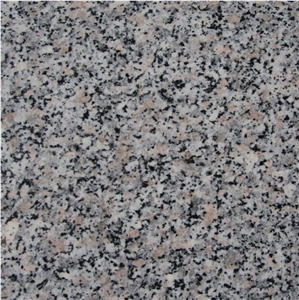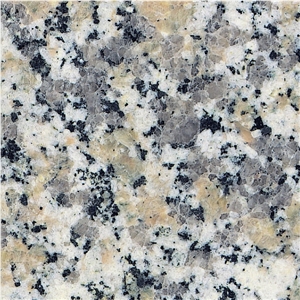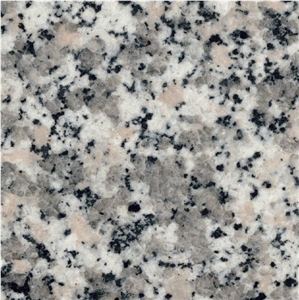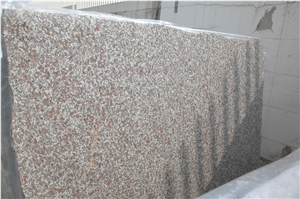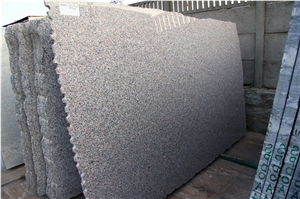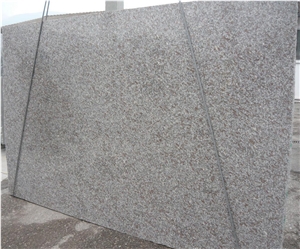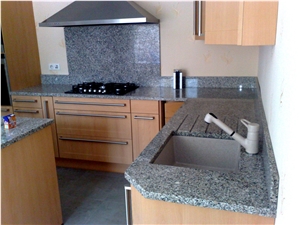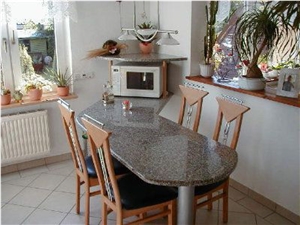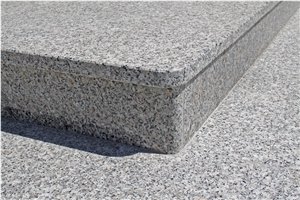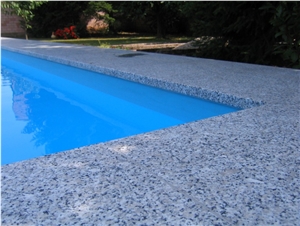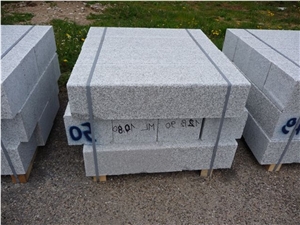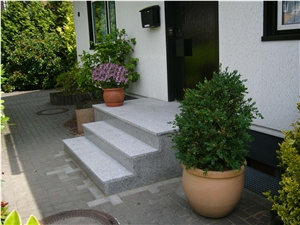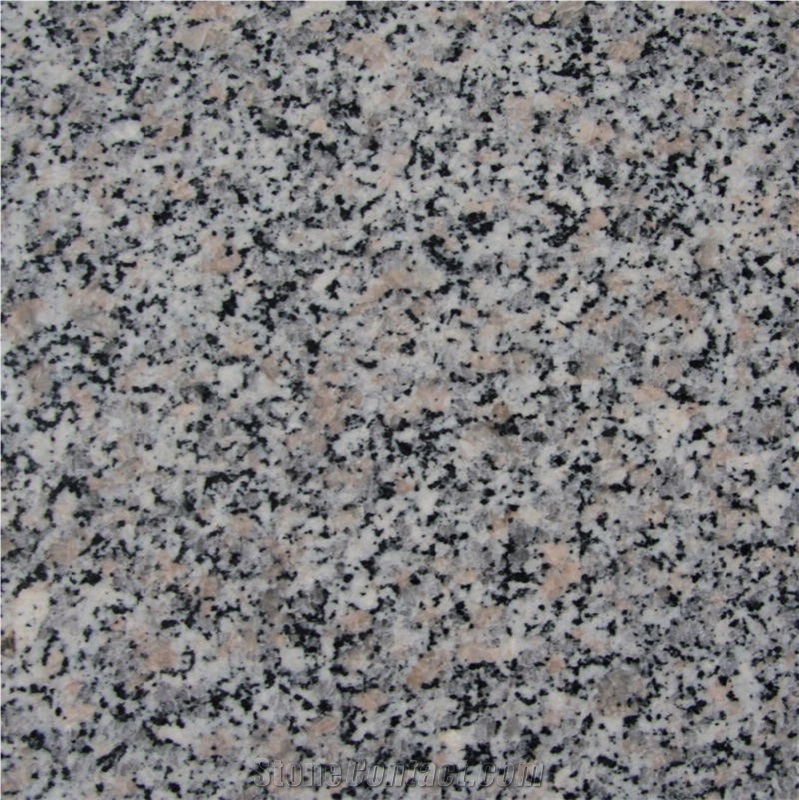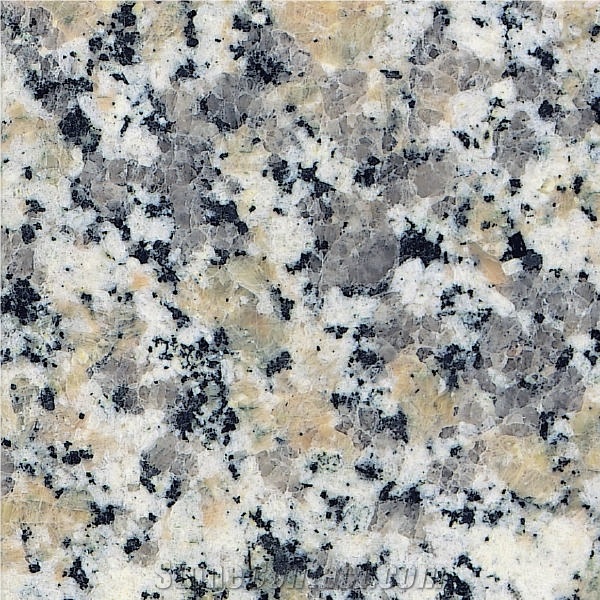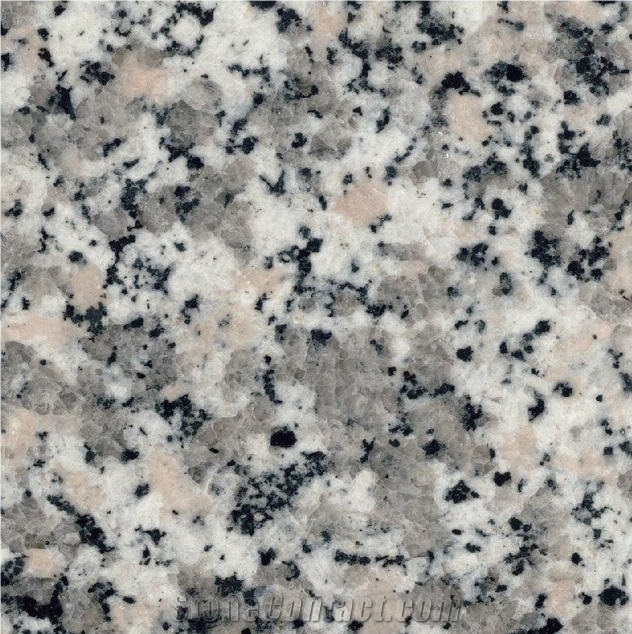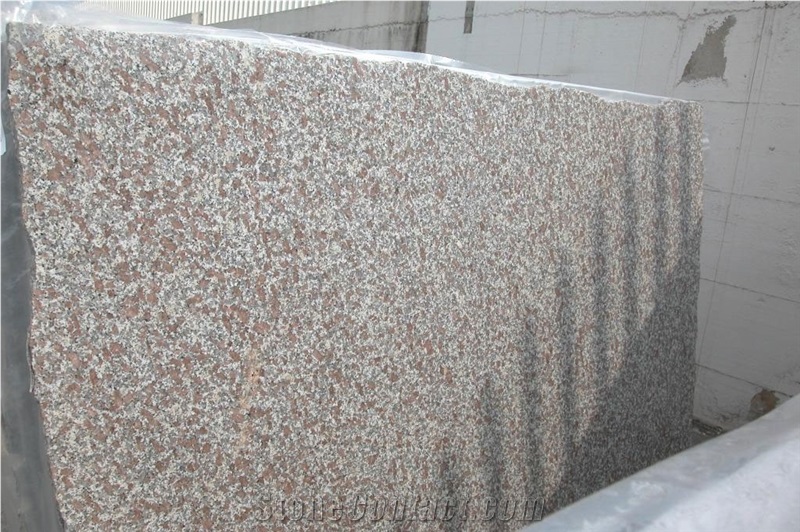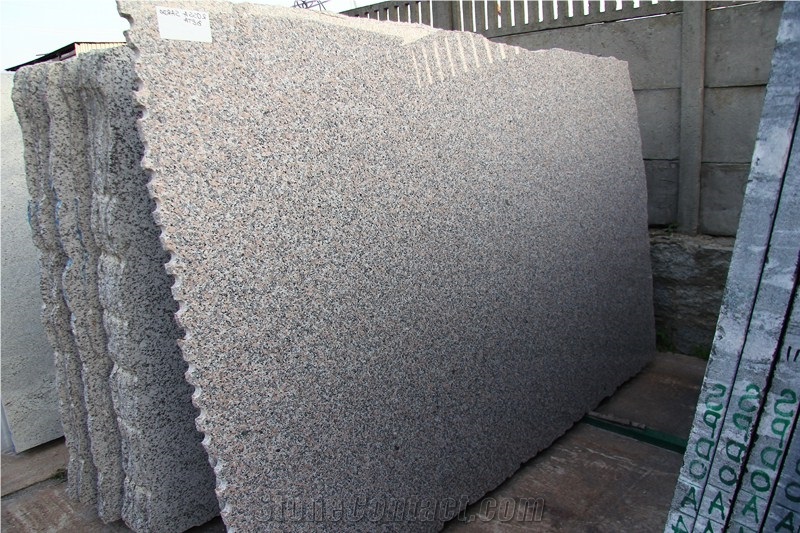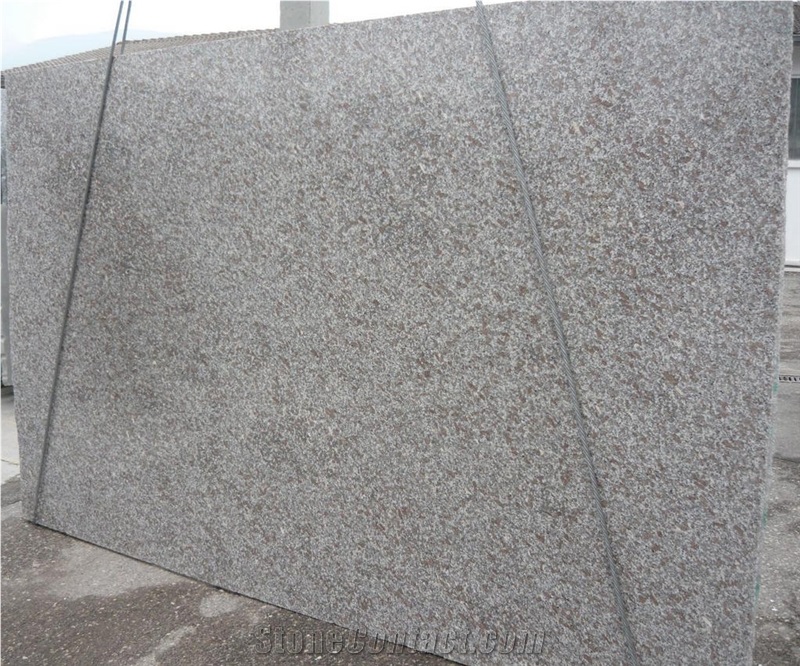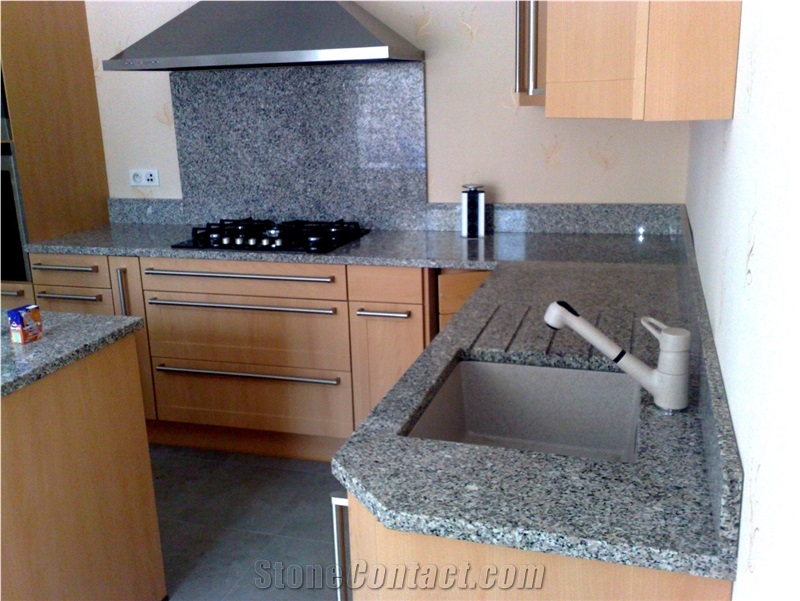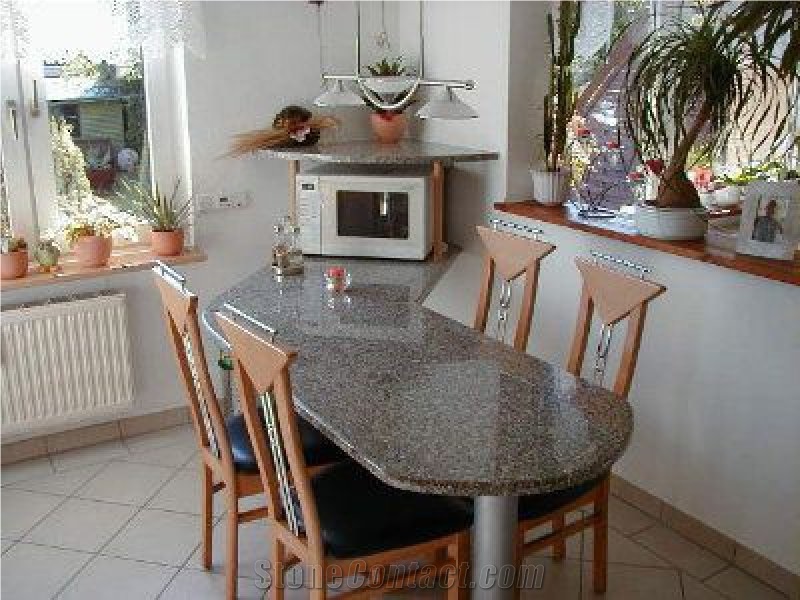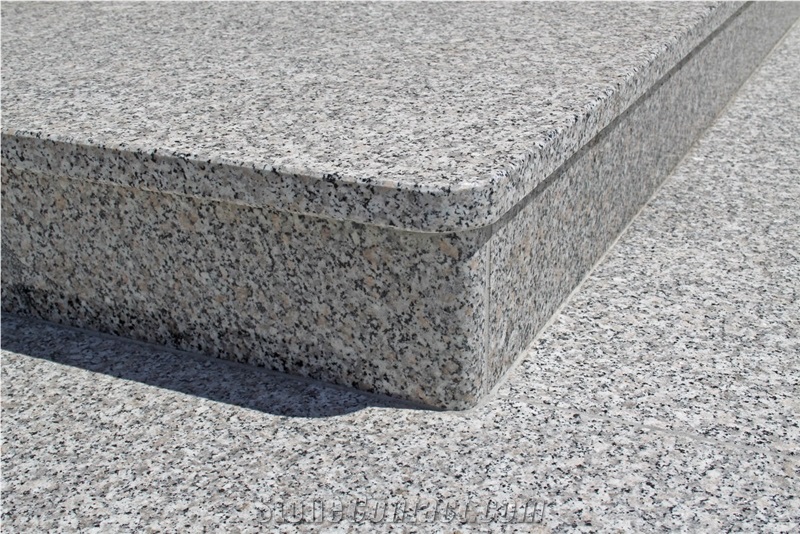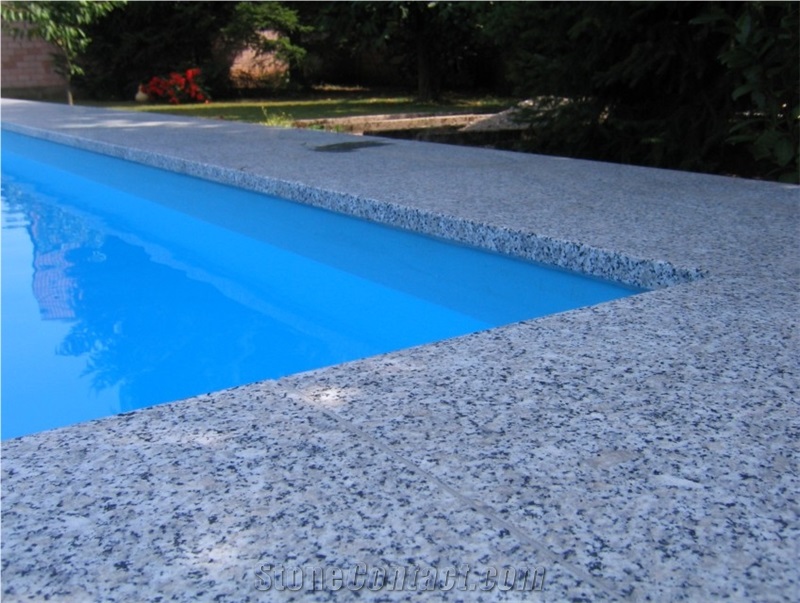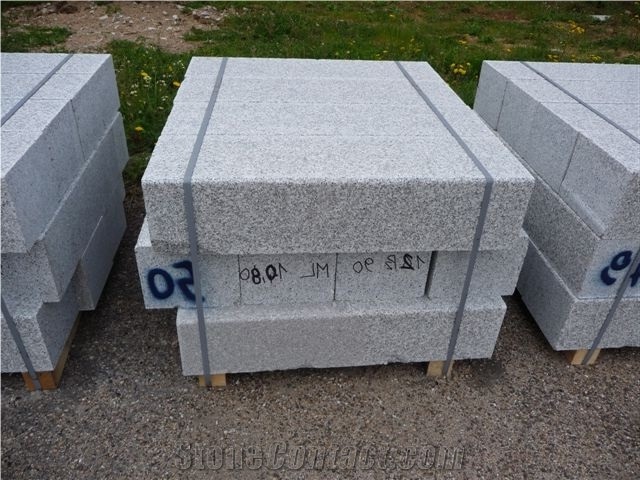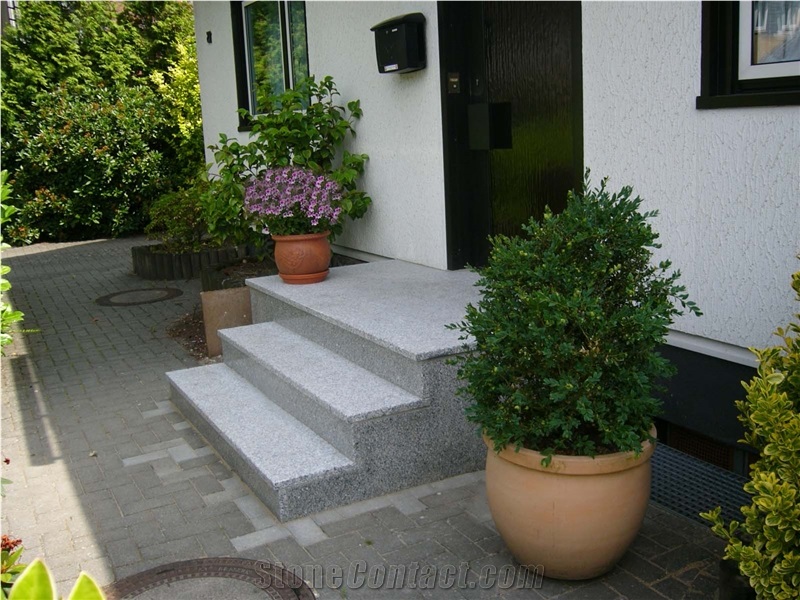Rosa Sardo Beta Granite
 Italy
(Arzachena, Luogosanto, Monte Limbara, Provincia di Olbia-Tempio, Pausania, Sassari, Sardegna)
Italy
(Arzachena, Luogosanto, Monte Limbara, Provincia di Olbia-Tempio, Pausania, Sassari, Sardegna)
Rosa Sardo Beta Granite is a type of granite characterized by its medium to coarse-grained texture and a predominant pinkish-gray color. Quarried in various locations in Sardegna, including Arzachena, Luogosanto, Monte Limbara, Provincia di Olbia-Tempio, Pausania, and Sassari, this granite exhibits subtle variations in both color and veining. These variations contribute to its visual appeal and make it an interesting choice for outdoor spaces.
The granite's pinkish-gray hue gives it a warm and inviting appearance, making it suitable for a variety of applications in outdoor design. The coarse-grained texture adds a natural and rugged feel to the stone, while the subtle veining provides depth and character. This combination of features makes Rosa Sardo Beta Granite a popular choice for applications such as outdoor paving, landscaping, and architectural projects where durability and aesthetic appeal are important considerations.

What is the difference between Rosa Sardo Beta Granite cobbles and paving setts?

Is it Rosa Sardo Beta Granite kerbstone or curbstone?

How standard thick is a Rosa Sardo Beta Granite curbstone?

Are there color variations of Italy's Rosa Sardo Beta Granite?

Should I do undermount sink with Rosa Sardo Beta Granite?

What is the disadvantage of Rosa Sardo Beta Granite sink?

How many square feet does 1 ton of Rosa Sardo Beta Granite cobblestone cover?

What is the best thickness for Rosa Sardo Beta Granite bar countertops?

Which sink is better Rosa Sardo Beta Granite or stainless steel for kitchen?

What is the difference between Rosa Sardo Beta Granite cobbles and pavement tiles?

What are the common surface treatments of Rosa Sardo Beta Granite cobblestones?

What are the different types of Rosa Sardo Beta Granite curbs?

Is Rosa Sardo Beta Granite cobblestone slippery when wet?

Can Italy's Rosa Sardo Beta Granite be used in a office?

How much does Rosa Sardo Beta Granite kerbstone weight per meter?
It may vary depending on the specific dimensions and thickness of the kerbstone. It would be best to contact a supplier or manufacturer of Rosa Sardo Beta Granite kerbstones for accurate weight information.

What is the coefficient of friction of Water Jet Cut Italy's Rosa Sardo Beta Granite tiles?

Is Italy's Rosa Sardo Beta Granite an expensive stone?

How much does Rosa Sardo Beta Granite curb weight per foot?
It is possible that it may not have a standardized curb weight per foot, or it may be specific to a certain manufacturer or supplier. It is recommended to consult with the manufacturer or a supplier of the product for accurate weight measurements.

Can Italy's Rosa Sardo Beta Granite be used exterior applications in cold climates?

What is the sand between Rosa Sardo Beta Granite cobblestones?

How thick is Italy's Rosa Sardo Beta Granite slabs?

How can I cut Rosa Sardo Beta Granite cobbles?

Can Italy's Rosa Sardo Beta Granite be used in floor coverings?

How can I clean between Rosa Sardo Beta Granite cobblestones?

How many square meter does 1 ton of Rosa Sardo Beta Granite cobblestone cover?

Can I cut Rosa Sardo Beta Granite tiles myself?

Is it better to cut Rosa Sardo Beta Granite wet or dry?

How thick should Rosa Sardo Beta Granite cobblestone be for a driveway?

Is Rosa Sardo Beta Granite good for a bathroom vanity top?

Why are cobblestones called cobblestones?

What size is a Rosa Sardo Beta Granite cobblestone?

Can Italy's Rosa Sardo Beta Granite be used outdoors?

Do Rosa Sardo Beta Granite sinks crack easily?

How long does a Rosa Sardo Beta Granite sink last?

What is the average flexural strength of Italy's Rosa Sardo Beta Granite?

How much does a Rosa Sardo Beta Granite cobblestone weight?

What are the common sizes of Rosa Sardo Beta Granite cobble stones?

Which countries also extract granite similar to Italian Rosa Sardo Beta Granite?
-

Xiamen Sanxiangda Import & Export Co., Ltd.
 China
China
 8YRDiamond members are premium members on platform, providing members with comprehensive approach to promoting their products, increasing products exposure and investment return to maximize.
8YRDiamond members are premium members on platform, providing members with comprehensive approach to promoting their products, increasing products exposure and investment return to maximize.
 Verified Supplier is for prove company authenticity,including business license,trade license and effective office space,to enhance buyers' trust to suppliers and their products, reducing communication costs.
Verified Supplier is for prove company authenticity,including business license,trade license and effective office space,to enhance buyers' trust to suppliers and their products, reducing communication costs.
Contact Supplier
-

Xiamen Sanxiangda Import & Export Co., Ltd.
 China
China
 8YRDiamond members are premium members on platform, providing members with comprehensive approach to promoting their products, increasing products exposure and investment return to maximize.
8YRDiamond members are premium members on platform, providing members with comprehensive approach to promoting their products, increasing products exposure and investment return to maximize.
 Verified Supplier is for prove company authenticity,including business license,trade license and effective office space,to enhance buyers' trust to suppliers and their products, reducing communication costs.
Verified Supplier is for prove company authenticity,including business license,trade license and effective office space,to enhance buyers' trust to suppliers and their products, reducing communication costs.
Contact Supplier
-

Xiamen Sanxiangda Import & Export Co., Ltd.
 China
China
 8YRDiamond members are premium members on platform, providing members with comprehensive approach to promoting their products, increasing products exposure and investment return to maximize.
8YRDiamond members are premium members on platform, providing members with comprehensive approach to promoting their products, increasing products exposure and investment return to maximize.
 Verified Supplier is for prove company authenticity,including business license,trade license and effective office space,to enhance buyers' trust to suppliers and their products, reducing communication costs.
Verified Supplier is for prove company authenticity,including business license,trade license and effective office space,to enhance buyers' trust to suppliers and their products, reducing communication costs.
Contact Supplier
-

Xiamen Sanxiangda Import & Export Co., Ltd.
 China
China
 8YRDiamond members are premium members on platform, providing members with comprehensive approach to promoting their products, increasing products exposure and investment return to maximize.
8YRDiamond members are premium members on platform, providing members with comprehensive approach to promoting their products, increasing products exposure and investment return to maximize.
 Verified Supplier is for prove company authenticity,including business license,trade license and effective office space,to enhance buyers' trust to suppliers and their products, reducing communication costs.
Verified Supplier is for prove company authenticity,including business license,trade license and effective office space,to enhance buyers' trust to suppliers and their products, reducing communication costs.
Contact Supplier
-

Xiamen Sanxiangda Import & Export Co., Ltd.
 China
China
 8YRDiamond members are premium members on platform, providing members with comprehensive approach to promoting their products, increasing products exposure and investment return to maximize.
8YRDiamond members are premium members on platform, providing members with comprehensive approach to promoting their products, increasing products exposure and investment return to maximize.
 Verified Supplier is for prove company authenticity,including business license,trade license and effective office space,to enhance buyers' trust to suppliers and their products, reducing communication costs.
Verified Supplier is for prove company authenticity,including business license,trade license and effective office space,to enhance buyers' trust to suppliers and their products, reducing communication costs.
Contact Supplier
-

-

-

 China
China
 12YRDiamond members are premium members on platform, providing members with comprehensive approach to promoting their products, increasing products exposure and investment return to maximize.
12YRDiamond members are premium members on platform, providing members with comprehensive approach to promoting their products, increasing products exposure and investment return to maximize.
 Verified Supplier is for prove company authenticity,including business license,trade license and effective office space,to enhance buyers' trust to suppliers and their products, reducing communication costs.
Verified Supplier is for prove company authenticity,including business license,trade license and effective office space,to enhance buyers' trust to suppliers and their products, reducing communication costs.
Contact Supplier
-

 China
China
 12YRDiamond members are premium members on platform, providing members with comprehensive approach to promoting their products, increasing products exposure and investment return to maximize.
12YRDiamond members are premium members on platform, providing members with comprehensive approach to promoting their products, increasing products exposure and investment return to maximize.
 Verified Supplier is for prove company authenticity,including business license,trade license and effective office space,to enhance buyers' trust to suppliers and their products, reducing communication costs.
Verified Supplier is for prove company authenticity,including business license,trade license and effective office space,to enhance buyers' trust to suppliers and their products, reducing communication costs.
Contact Supplier
-

Xiamen Sanxiangda Import & Export Co., Ltd.
 China
China
 8YRDiamond members are premium members on platform, providing members with comprehensive approach to promoting their products, increasing products exposure and investment return to maximize.
8YRDiamond members are premium members on platform, providing members with comprehensive approach to promoting their products, increasing products exposure and investment return to maximize.
 Verified Supplier is for prove company authenticity,including business license,trade license and effective office space,to enhance buyers' trust to suppliers and their products, reducing communication costs.
Verified Supplier is for prove company authenticity,including business license,trade license and effective office space,to enhance buyers' trust to suppliers and their products, reducing communication costs.
Contact Supplier
The request includes: 1. surface finished, size 2. quantity required






